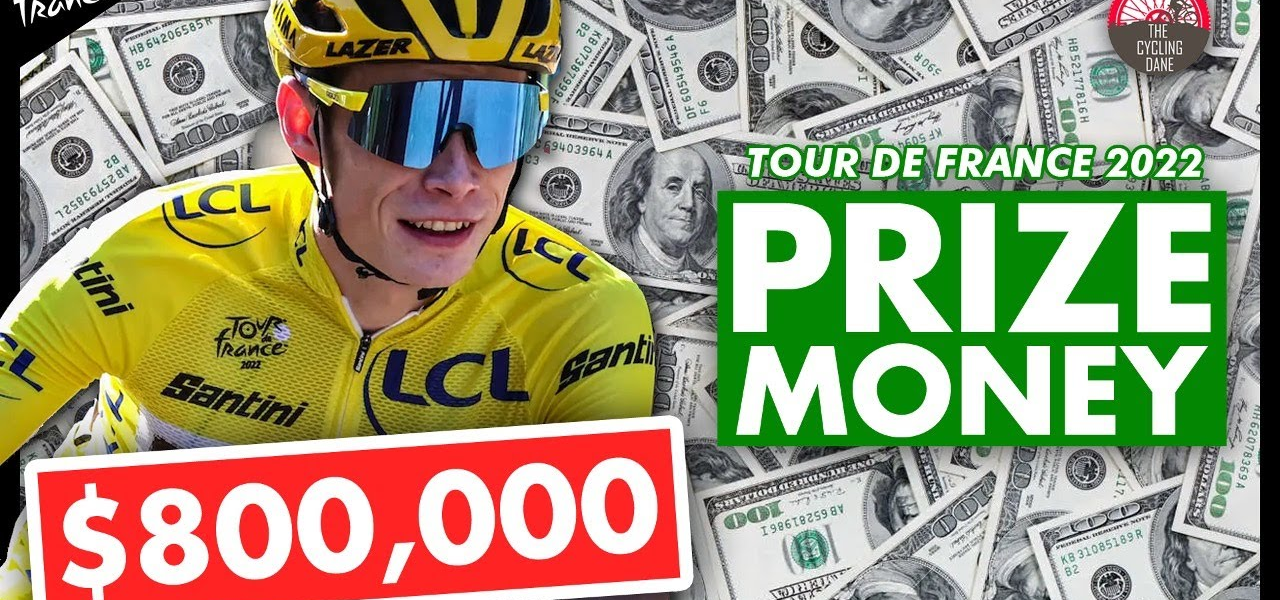The Tour de France, one of the most prestigious and grueling cycling events in the world, not only tests the endurance and skill of its participants but also offers substantial prize money. Each year, hundreds of cyclists from around the globe compete in this epic race, not just for the glory of wearing the yellow jersey but also for a share of the prize money. In this article, we will explore the intricacies of the Tour de France prize money, how it is distributed, and what it means for the participants.
Overview of the Tour de France
Before delving into the specifics of the prize money, it is essential to understand the significance of the Tour de France. Established in 1903, the Tour de France is an annual men’s multiple-stage bicycle race primarily held in France, with occasional passages through nearby countries. The race typically covers approximately 3,500 kilometers about 2,200 miles over 21 stages, which include flat, hilly, and mountainous terrains.
The Tour de France is not only a test of physical endurance but also a tactical battle, with teams employing various strategies to ensure their riders are in the best position to win stages or claim the overall victory. The race attracts millions of spectators along the route and is broadcast to a global audience, making it one of the most-watched sporting events in the world.
Prize Money Distribution
The prize money for the Tour de France is one of the most lucrative in professional cycling. The total prize pool for the event varies each year but typically exceeds €2 million. The distribution of this prize money is designed to reward not only the overall winner but also stage winners, classification leaders, and teams.
General Classification Yellow Jersey
The most coveted prize in the Tour de France is the yellow jersey, awarded to the rider with the lowest cumulative time across all stages. The winner of the general classification GC receives the largest share of the prize money. For instance, in recent editions, the GC winner has taken home €500,000. The second and third place finishers in the GC also receive significant sums, with prizes of €200,000 and €100,000, respectively.
Stage Wins: Each of the 21 stages offers prize money for the top finishers. The winner of a stage typically receives €11,000, with smaller amounts awarded to the riders finishing in the top 20. This distribution encourages aggressive racing and ensures that every stage remains competitive.
Points Classification Green Jersey
The green jersey is awarded to the rider who accumulates the most points from high finishes in stages and intermediate sprints. The winner of the points classification receives €25,000, with additional prizes for the runners-up.
Mountains Classification Polka Dot Jersey: The polka dot jersey is awarded to the best climber, determined by points earned on designated mountain climbs. The winner of the mountains classification receives €25,000, with smaller prizes for those finishing in the top positions.
Young Rider Classification White Jersey: The white jersey is awarded to the best young rider, typically under the age of 26. The winner of this classification receives €20,000, with additional prizes for the top finishers.
Team Classification
Teams compete for the best cumulative time of their top three riders in each stage. The winning team in the team classification receives €50,000, and prizes are also awarded to the second and third place teams.
Combativity Award: The combativity award recognizes the most aggressive rider in each stage, with a prize of €2,000. At the end of the Tour, the most aggressive rider overall receives €20,000.
What Prize Money Means for Riders
While the prize money in the Tour de France is significant, it is essential to understand its impact on the riders and their teams. Unlike some other sports, where individual athletes keep their winnings, cycling teams often pool prize money and distribute it among all team members, including support staff. This approach reflects the team nature of cycling, where every member plays a crucial role in the success of their leader.
For many professional cyclists, especially those on smaller teams, the prize money from the Tour de France can represent a substantial portion of their annual income. Winning a stage or a classification can significantly enhance a rider’s career prospects and financial situation. However, the true value of the Tour de France often lies in the exposure and prestige it offers, which can lead to sponsorship deals and increased earnings off the bike.
Historical Context and Changes Over Time
The prize money in the Tour de France has evolved significantly since the race’s inception. In the early years, prizes were modest, and riders often faced harsh conditions with little financial reward. However, as the race gained popularity and commercial sponsors became involved, the prize money increased substantially.
FAQS
Is there prize money for team performance?
While there’s no direct prize money for teams, the top five teams receive bonus points based on the combined times of their three best riders on each stage. These points can contribute to overall team standings and prestige.
How much is the total prize money?
The total prize money for the Tour de France varies from year to year, but it’s typically in the millions of euros.
Do riders earn money from endorsements and sponsorships?
Yes, many top cyclists earn significant income from endorsements and sponsorships, which often exceeds their prize money winnings.
Conclusion
The Tour de France prize money is a testament to the race’s prestige and the high stakes involved for riders and teams. While financial rewards are significant, the race’s true value lies in the honor and recognition it brings to its participants. As the Tour continues to evolve, both the prize money and the opportunities it presents will likely grow, solidifying its status as the pinnacle of professional cycling.
To read more, Click Here .
